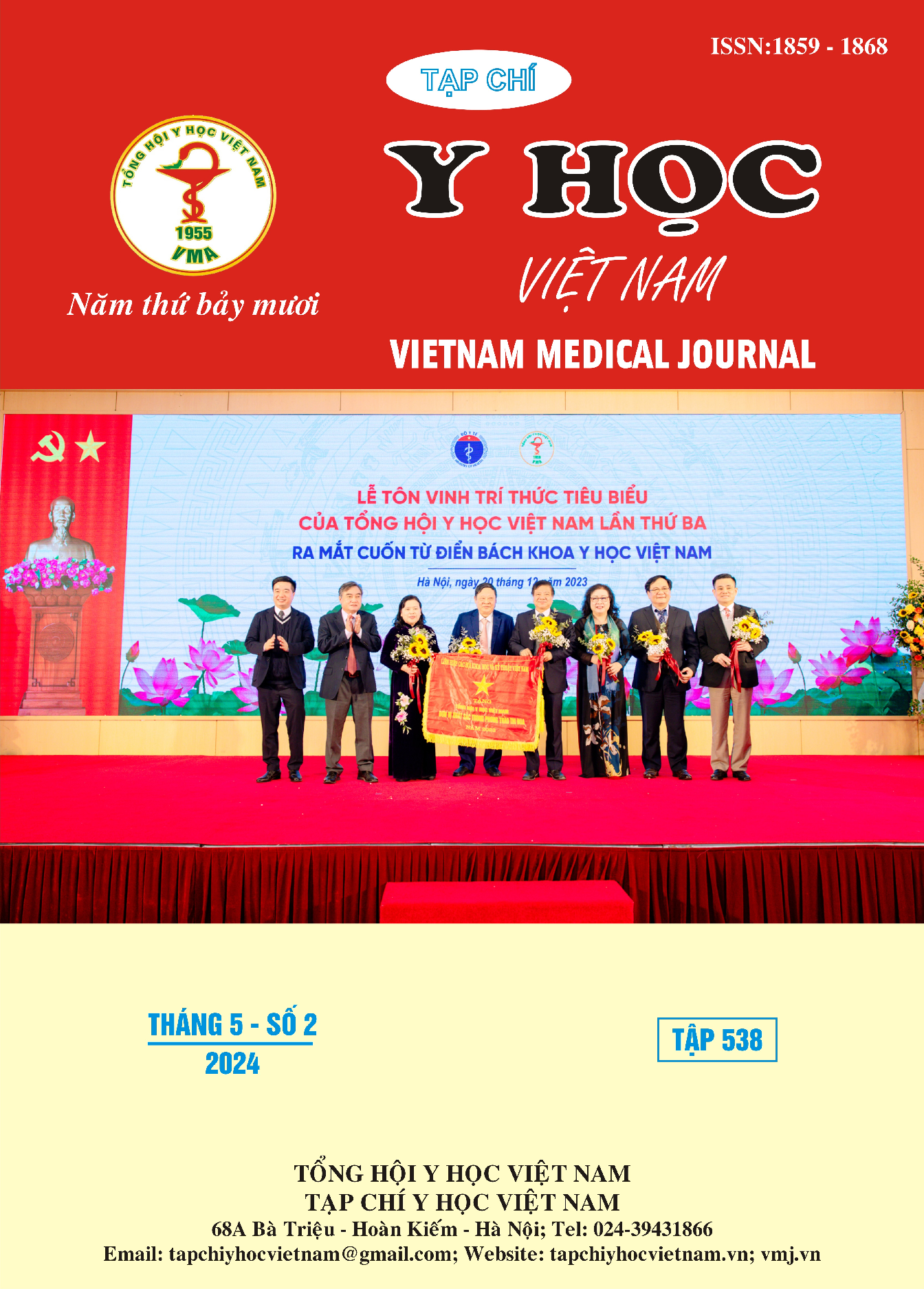RESULTS OF MINIMALLY INVASIVE PERCUTANEOUS SCREW FIXATION OF THORACOLUMBAR SPINE FRACTURES AT THAI BINH PROVINCIAL GENERAL HOSPITAL
Main Article Content
Abstract
Objectives: To describe the clinical characteristics, imaging diagnosis of spinal cord injury in the thoracic-lumbar hinge segment and evaluate the surgical results of the above group of patients by posterior surgical method. Subjects and methods: Retrospective descriptive study of 66 patients diagnosed with thoracic-lumbar spine injury without paralysis and operated at the neurosurgery department of the hospital. Thai Binh Provincial General Hospital from January 2020 to the end of December 2020. Results: The age group from 40 to under 60 years old accounted for 62.1%, the lowest was 22 years old, the highest was 65 years old, the mean age was 45.69 ± 10.34 years old. Causes of daily-life accidents (48.5%). 100% of patients admitted to the hospital have low back pain. Subclinical images on X-ray and Computed tomography (CT) of vertebrae damaged L1 (62.3%), Denis type fracture (72.7%). Postoperative hunchback angle surgery results improved preoperatively to 38.5 degrees, the lowest was 2 degrees. The hunchback angle improved from the maximum 32 degrees after surgery to the smallest 0 degrees. After discharge from hospital, 78.8% of patients had complete pain relief. Overall results: good 59 patients (89.4%), good: 5 patients (7.6%%), moderate: 2 patients (3%), bad: none. Conclusion: Injury to the spine in the thoracic-lumbar hinge segment was the main cause of injury due to daily-life accidents (48.5%). The vertebral body hunchback angle and regional hunchback angle improved much after surgery. After discharge from hospital, 78.8% of patients had complete pain relief. Overall results: good 59 patients (89.4%), good: 5 patients (7,6%), average: 2 patients (3%), bad: (0%)
Article Details
References
2. Bronsard N Boli T, Challali M, de Dompsure R, Amoretti N, Padovani (2013), "Comparison between percutaneous and traditional fixation of lumbar spine fracture: intraoperative radiation exposure levels and outcomes.", Orthop Traumatol Surg, pp.162-164
3. Hui - lin Yang, et al (2009), "Fluoroscopically - guided indirect posrerior reduction and fixation of thoracolumbar burst fractures without fusion”, International Orthopaedics (SICOT), 33, 1329-1334.
4. Nguyễn Hoàng Long (2006), "Kết quả phẫu thuật gẫy đoạn bản lề cột sống ngực - thắt lưng không liệt hoặc liệt không hoàn toàn bằng hai đường mổ sau và trước", luận văn bác sỹ nội trú, Trường ĐH Y Hà Nội, Hà Nội.
5. Nguyễn Văn Thạch (2007), Nghiên cứu điều trị phẫu thuật gãy cột sống ngực - thắt lưng không vững, không liệt tủy và liệt tủy không hoàn toàn bằng dụng cụ Moss Miami, Luận án tiến sĩ y học, Học viện quân Y, Hà Nội.
6. Trần Văn Thiết, Lê Minh Biển (2014), "Đánh giá kết quả điều trị phẫu thuật 324 bệnh nhân chấn thương cột sống vùng ngực- thắt lưng tại bệnh viện đa khoa Thanh Hóa", Tạp chí Y học TP.Hồ Chí Minh, 6, 37-40.


